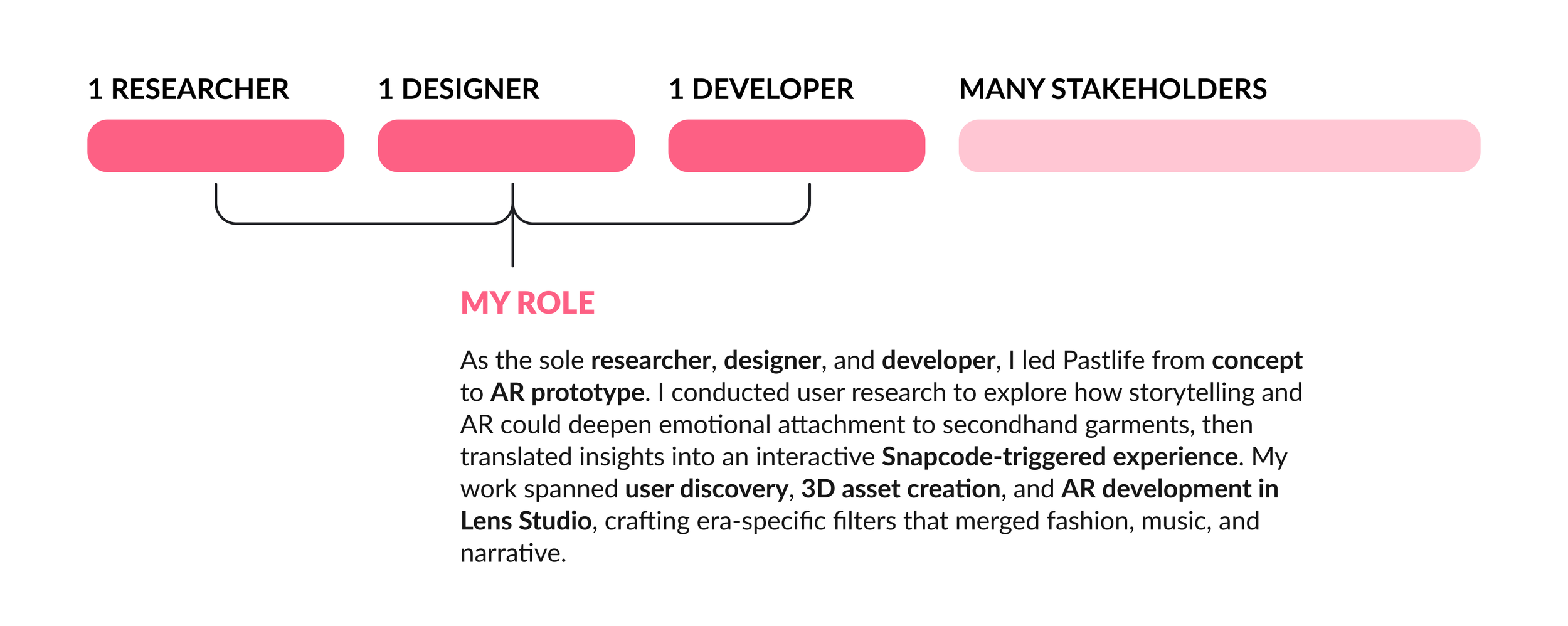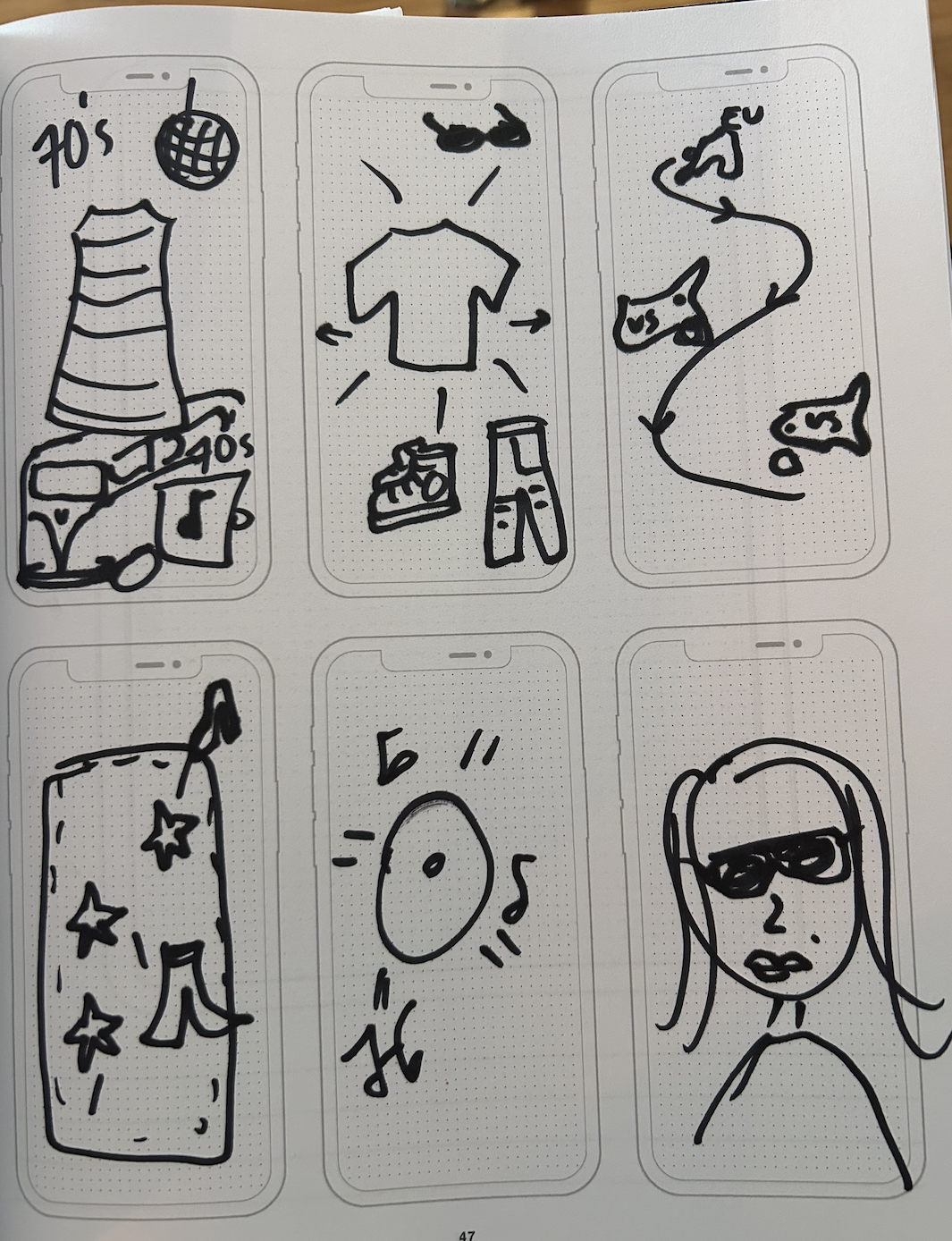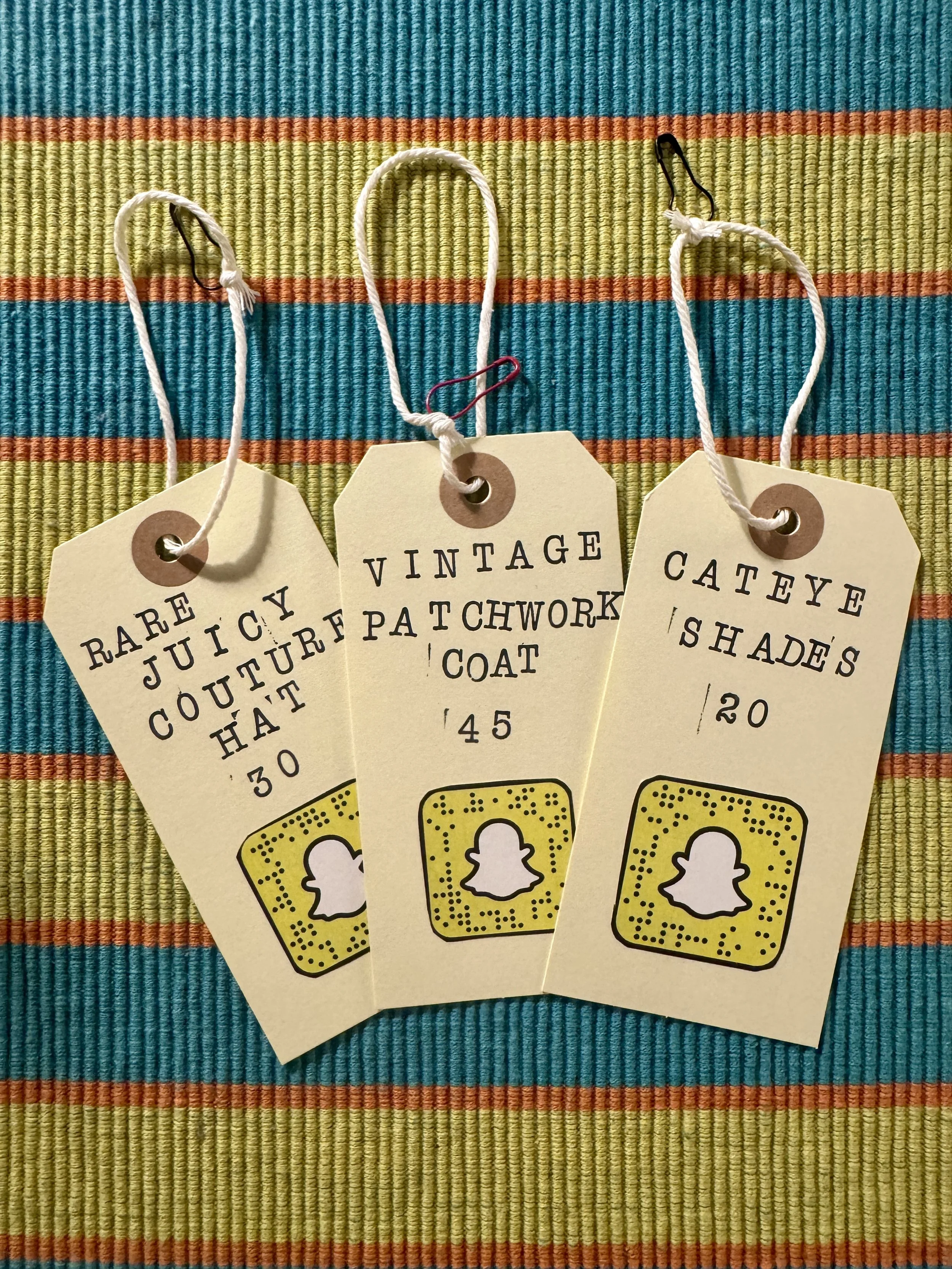PastLife
an AR powered intervention that brings vintage fashion to life with stories that turn every thrift find into a piece of living history 🪩
Overview
Pastlife is an augmented reality experience designed to transform in-person resale shopping into a more engaging, trustworthy, and emotionally resonant journey. Drawing from user research with Gen Z and Millennial shoppers, the project addresses barriers such as lack of storytelling, trust gaps, and overwhelming discovery. By scanning Snapcodes on garment tags, users unlock decade-specific AR filters with visuals, music, and item history, bringing personality and meaning to secondhand clothing.
Project Type
UX Design, UX Research, AR Development
Duration
3 Weeks
Tools
Figma, Blender, Lens Studio
How might we…
design AR experiences that enhance storytelling, increase purchase likelihood, and add perceived value to secondhand items in physical secondhand retail environments?
Quick Stats
100% of participants reported higher purchase interest after using the AR lens.
75% launched the AR experience in under 20 seconds with zero guidance.
100% described the experience as fun, special, or memorable.
75% correctly interpreted the garment’s era & story in under 35 seconds.
All testers spent more time engaging with AR-tagged garments vs. non-tagged items.
Role
Overview
What is PastLife?
PastLife is an AR-powered retail experience designed to transform secondhand shopping into an immersive storytelling journey. By scanning a Snapcode on a garment tag, shoppers unlock decade-specific visuals, music, and narratives, turning browsing into an engaging interaction that boosts emotional connection and purchase likelihood.
Timeline
How It Went Down
The entire project was completed over the course of three weeks, with each week representing a new design stage.
Challenge
The Problem to Solve
In-person resale shopping often lacks the clarity, trust signals, and convenience that modern shoppers, especially Gen Z and Millennials, expect. This leaves many potential customers feeling overwhelmed or hesitant, particularly when evaluating higher-value vintage pieces.
Hypothesis
Central Idea
If AR could reveal the hidden stories behind garments, they could:
Create emotional value through identity-driven storytelling
Encourage longer in-store exploration
Ultimately increase purchase likelihood
Value
Proposition
Why Build This?
With the use of both qualitative and quantitative research, I was able to draft up a value proposition for PastLife, speaking to how it would encourage stronger purchasing within the IRL secondhand space.
Research
Primary Methods
Competitive Analysis
Quotes
Persona
Our Target User
I created the primary persona, the “identity dresser,” with the use of my qualitative research in order to map user motivations, frustrations, and AR familiarity levels — any convey findings to stakeholders.
Insights
Key Insights
Solution
AR as Tool
A scalable AR experience that uses Snapcodes on garment tags to unlock decade-specific visuals, music, and stories, transforming secondhand shopping into an emotionally engaging journey.
Ideation
Crazy 6’s
Explored concepts from AR vintage try-ons to gamified store hunts with the goal of maximizing ideas.
Key Features
User Flow
How Users Will Navigate the Experience
I designed a user flow for the experience in order to define how users would move through the discovery, engagement, and sharing aspects of using the PastLife lenses.
AR Markers
How Users Unlock the Experience
Pastlife uses Snapcodes printed directly on garment tags to seamlessly connect shoppers to decade-specific AR experiences.
This lightweight, low-cost solution makes implementation simple for small retailers — no custom hardware or complex tech required.
AR Assets
The Storytelling Objects
Pastlife features three immersive AR lenses — 1950s, 1970s, and Y2K — each designed with era-specific visuals, music, and narrative cues to evoke the style and culture of the time.
From retro color palettes and typography to curated soundtracks, each asset was crafted to spark nostalgia, reinforce identity, and make garments feel special.
Final UI
Snapcodes
Era Snapcodes
Scan the Snapcodes below with your phone to launch and explore the filters. (Don’t forget to launch Snapchat beforehand!)
50s Filter
70s Filter
Y2K Filter
Usability
Testing
Demo
Watch the Reel
Impact 🎉
Limitations
Addressing Barriers
While Pastlife validated the potential of AR to enhance secondhand shopping, several constraints shaped the scope of this pilot.
AR tracking reliability was dependent on lighting, device quality, and user familiarity with scanning Snapcodes, which could affect consistency in real-world environments.
The current experience relies on manual tagging of garments, limiting scalability without future AI-assisted garment recognition to automate era identification.
Testing was conducted with a small participant group in controlled and semi-controlled settings, so broader field testing would be needed to fully measure long-term engagement, repeat usage, and impact on sales.
Reflections
What I Learned
PastLife reinforced that storytelling is a powerful retail tool, especially in spaces like secondhand shopping where identity, nostalgia, and trust are core drivers.
I saw firsthand how AR can bridge the gap between physical and digital retail, turning a passive browse into an active, engaging experience.
Next Steps
What’s to Come
Expand testing to larger, more diverse audiences across multiple retail environments
Integrate AI-assisted garment recognition to automatically identify era and relevant storytelling assets
Introduce gamification features like collectible era hunts or rewards for multiple scans
Refine sound design and visual cues for stronger emotional impact
Partner with local vintage and consignment shops to pilot real-world store rollouts























